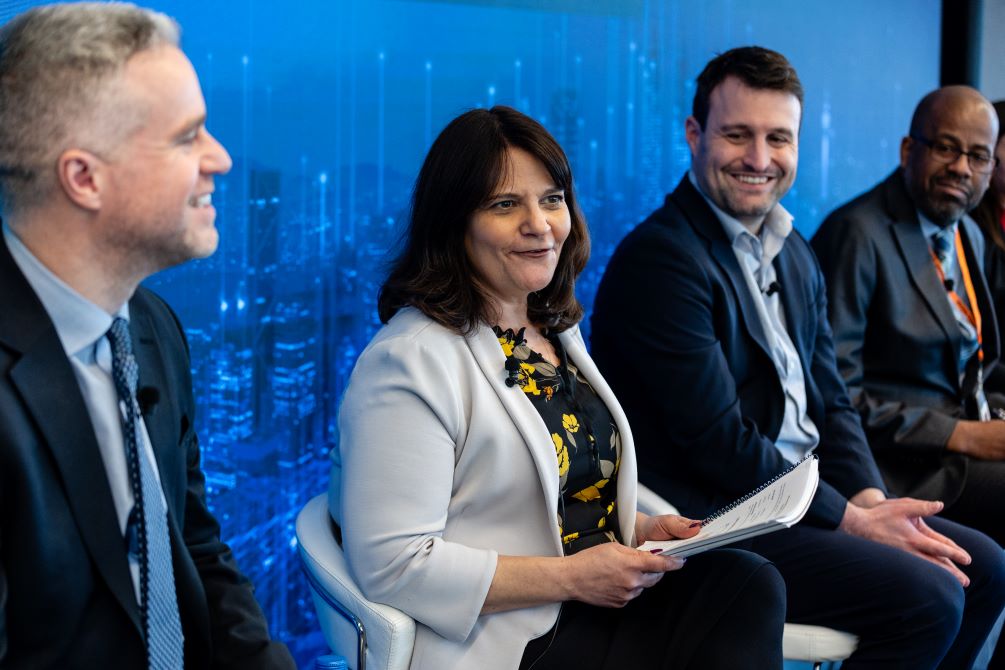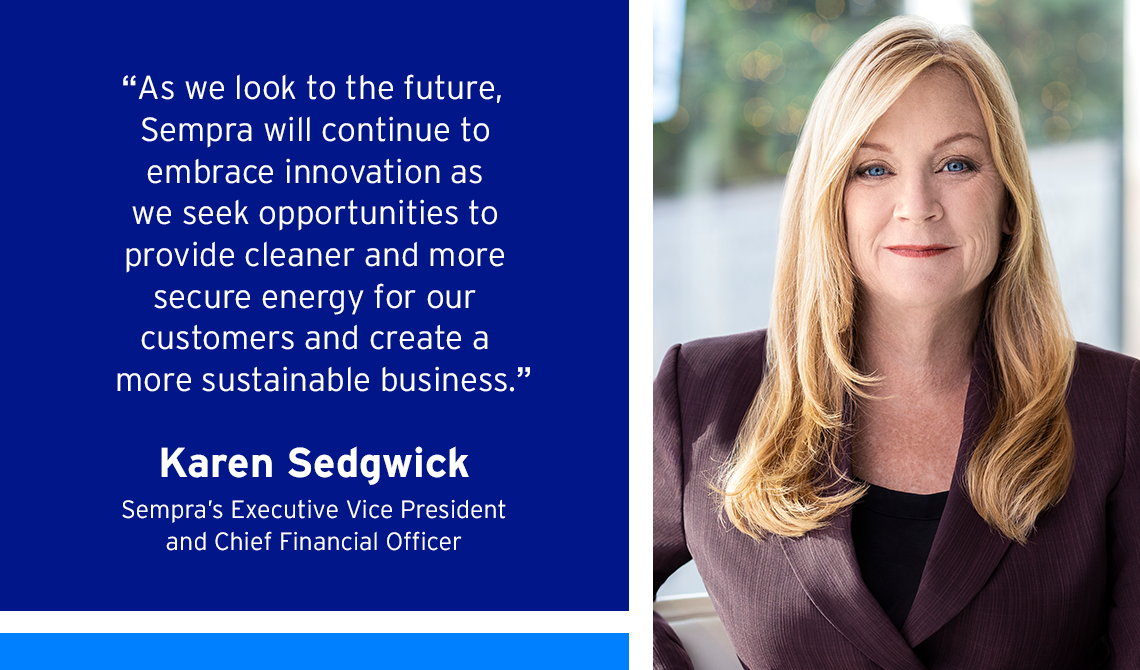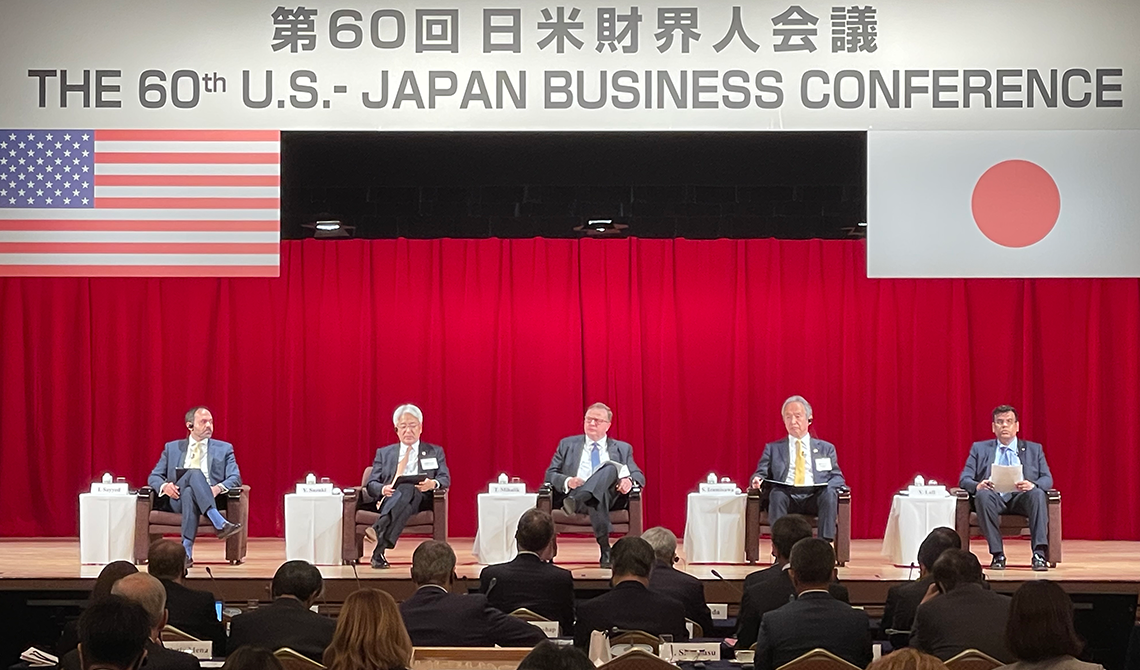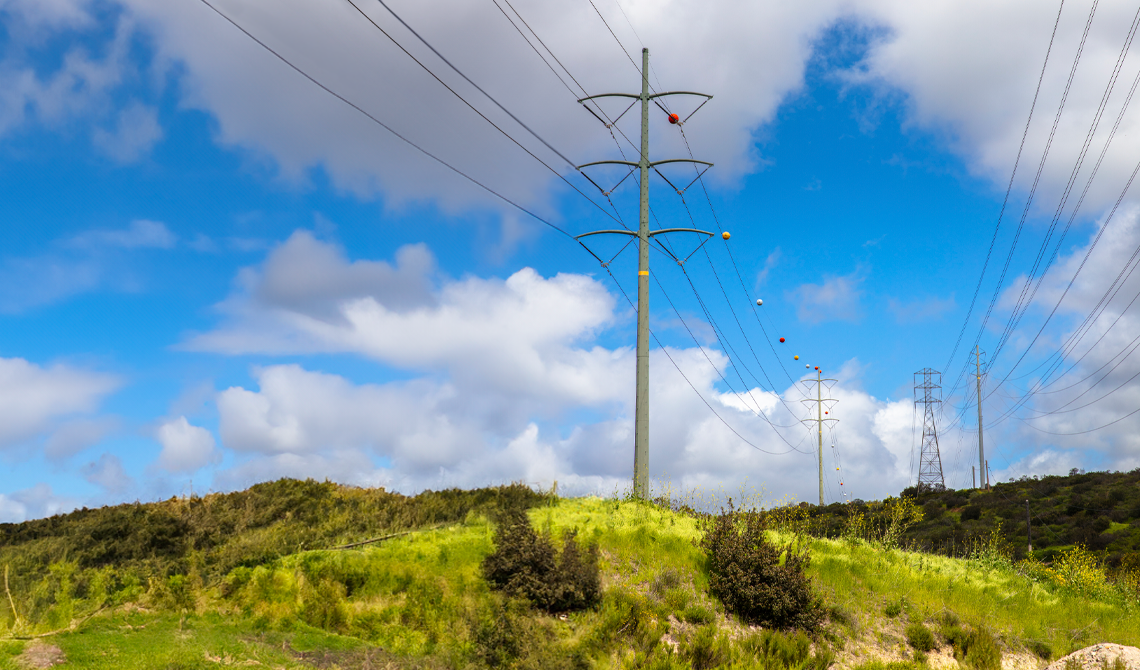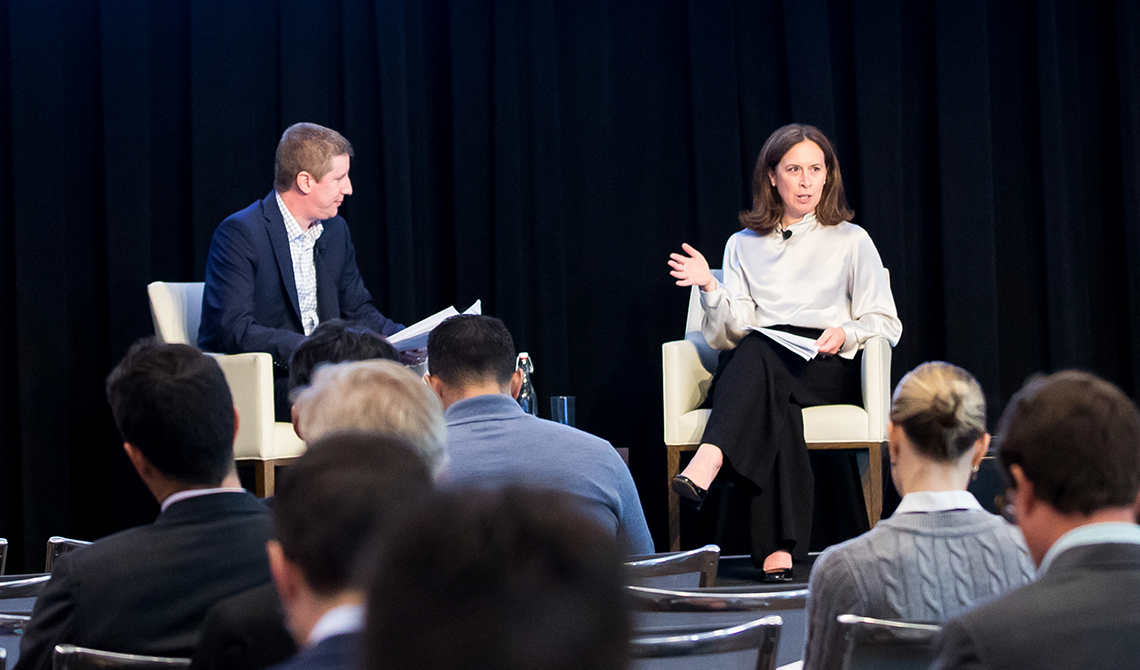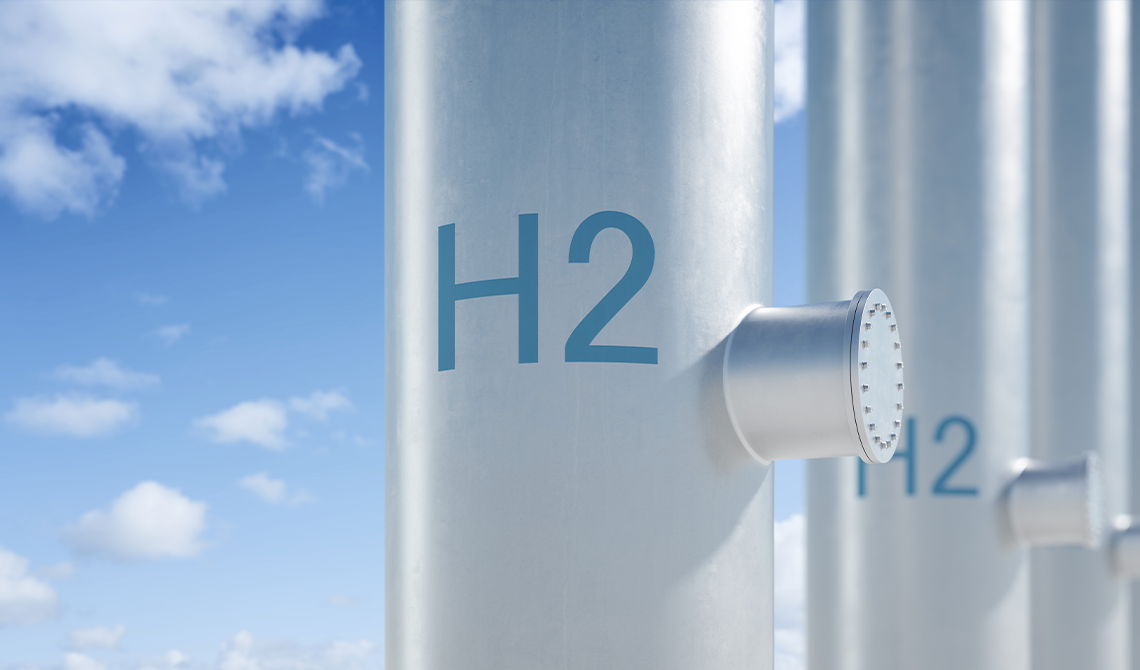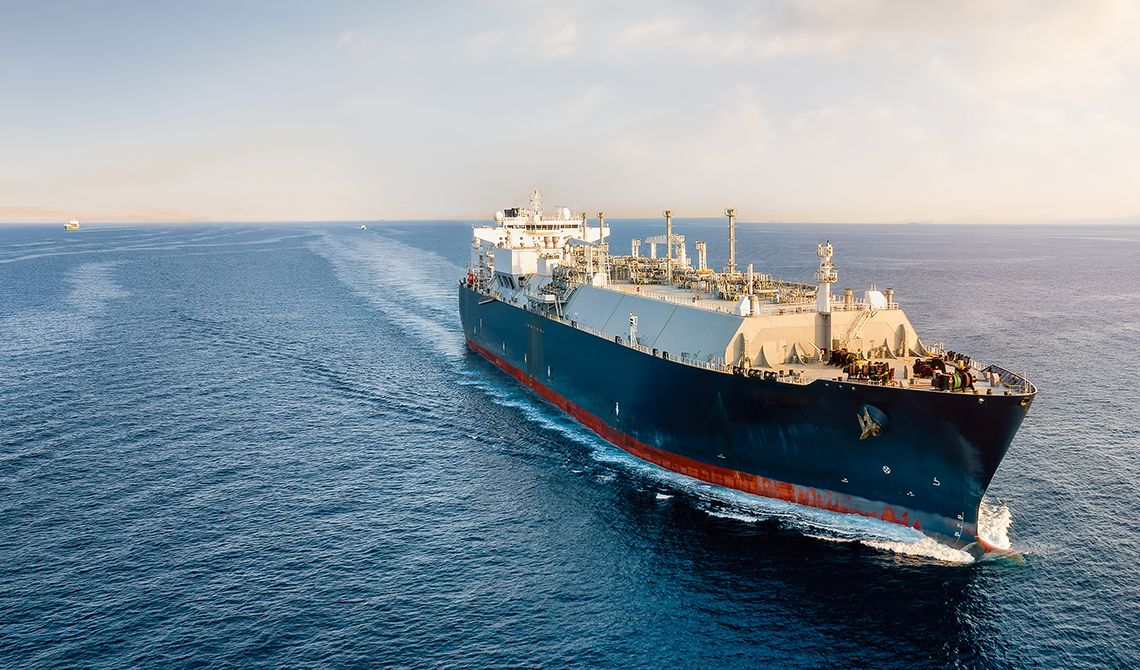The events of the previous two years have created a significant set of societal challenges. The COVID-19 pandemic, the war in Ukraine and widespread inflationary pressures have disrupted the global economy, while also underscoring the critical role that new energy infrastructure plays in supporting economic growth, energy security and global peace and stability.
Sempra is helping to play an important leadership role in responding to the increasing demands for a global energy system that requires improved security of energy supplies and lower carbon intensity. As geopolitical challenges persist and the demand for energy increases, the need for reliable, affordable and cleaner energy, such as liquified natural gas (LNG), becomes ever-more important.
According to the U.S. Department of Energy, the United States is now the top global exporter of LNG with exports projected to grow by more than 20% by the end of 2022. Growing exports of American energy helps to strengthen the energy security of our allies and displaces higher carbon fuels like coal that are commonly used in power production, while expanding high skilled jobs here at home.
New sources of energy to help secure the future
Poland is a stalwart ally in Central Europe and one of America’s strongest partners in fostering security and prosperity regionally and throughout Europe. That is why it was exciting for Sempra to announce earlier this week that its subsidiary, Sempra Infrastructure, signed a heads of agreement (HOA) with the Polish Oil & Gas Company (PGNiG) to supply LNG from its growing portfolio of U.S. liquefaction development projects. The HOA contemplates a 20-year agreement under which PGNiG would receive up to 3 million tonnes per annum (Mtpa) of LNG to help strengthen the energy security of Poland and Central Europe.
“At Sempra, we understand the importance of helping Poland improve its energy and climate security by making investments right here in North America that expand critical energy infrastructure to export American energy,” said Justin Bird, chief executive officer of Sempra Infrastructure. “We are honored to work alongside PGNiG to support the delivery of cleaner fuels to help advance Polish energy systems and contribute to a lower-carbon future.”
The HOA paves the way for the negotiation and finalization of definitive 20-year LNG sale-and-purchase agreements for 2 Mtpa from the proposed Cameron LNG Phase 2 project, which is expected to include a single LNG train with a maximum production capacity of approximately 6.75 Mtpa of LNG, as well as debottlenecking of the existing three LNG trains in Hackberry, Louisiana, and 1 Mtpa from the proposed Port Arthur LNG project, a fully-permitted facility in Jefferson County, Texas with projected capacity of approximately 13.5 Mtpa.
In addition, Sempra Infrastructure and PGNiG expect to continue working toward a framework that serves to reduce, mitigate and report greenhouse gas emissions throughout the LNG value chain.
The HOA is a preliminary, non-binding arrangement, and the development of the Cameron LNG Phase 2 and Port Arthur LNG projects are subject to a number of risks and uncertainties, including reaching definitive agreements, securing all necessary permits, signing engineering contracts, obtaining financing and incentives and reaching a final investment decision for each project.
This article contains statements that constitute forward-looking statements within the meaning of the Private Securities Litigation Reform Act of 1995. Forward-looking statements are based on assumptions with respect to the future, involve risks and uncertainties, and are not guarantees. Future results may differ materially from those expressed in any forward-looking statements. These forward-looking statements represent our estimates and assumptions only as of the date of this article. We assume no obligation to update or revise any forward-looking statement as a result of new information, future events or other factors.
In this article forward-looking statements can be identified by words such as “believes,” “expects,” “intends,” “anticipates,” “plans,” “estimates,” “projects,” “forecasts,” “should,” “could,” “would,” “will,” “confident,” “may,” “can,” “potential,” “possible,” “proposed,” “in process,” “under construction,” “in development,” “opportunity,” “target,” “outlook,” “maintain,” “continue,” “goal,” “aim,” “commit,” or similar expressions, or when we discuss our guidance, priorities, strategy, goals, vision, mission, opportunities, projections, intentions or expectations.
Factors, among others, that could cause actual results and events to differ materially from those described in any forward-looking statements include risks and uncertainties relating to: California wildfires, including the risks that we may be found liable for damages regardless of fault and that we may not be able to recover all or a substantial portion of costs from insurance, the wildfire fund established by California Assembly Bill 1054, in rates from customers or a combination thereof; decisions, investigations, regulations, issuances or revocations of permits and other authorizations, renewals of franchises, and other actions by (i) the California Public Utilities Commission (CPUC), Comisión Reguladora de Energía, U.S. Department of Energy, U.S. Federal Energy Regulatory Commission, Public Utility Commission of Texas, and other regulatory and governmental bodies and (ii) states, counties, cities and other jurisdictions in the U.S., Mexico and other countries in which we do business; the success of business development efforts, construction projects and acquisitions and divestitures, including risks in (i) the ability to make a final investment decision, (ii) completing construction projects or other transactions on schedule and budget, (iii) the ability to realize anticipated benefits from any of these efforts if completed, and (iv) obtaining the consent or approval of partners or other third parties, including governmental entities and regulatory bodies; the resolution of civil and criminal litigation, regulatory inquiries, investigations and proceedings, arbitrations, and property disputes, including those related to the natural gas leak at Southern California Gas Company’s (SoCalGas) Aliso Canyon natural gas storage facility; changes to laws, including changes to certain of Mexico’s laws and rules that impact energy supplier permitting, energy contract rates, the electricity industry generally and the ability to import, export, transport and store hydrocarbons; cybersecurity threats, including by state and state-sponsored actors, to the energy grid, storage and pipeline infrastructure, information and systems used to operate our businesses, and confidentiality of our proprietary information and personal information of our customers and employees, including ransomware attacks on our systems and the systems of third-party vendors and other parties with which we conduct business, all of which have become more pronounced due to recent geopolitical events and other uncertainties, such as the war in Ukraine; failure of foreign governments and state-owned entities to honor their contracts and commitments; actions by credit rating agencies to downgrade our credit ratings or to place those ratings on negative outlook and our ability to borrow on favorable terms and meet our debt service obligations; the impact of energy and climate policies, legislation, rulemaking and disclosures, as well as related goals set and actions taken by companies in our industry, including actions to reduce or eliminate reliance on natural gas generally and any deterioration of or increased uncertainty in the political or regulatory environment for California natural gas distribution companies and the risk of nonrecovery for stranded assets; the pace of the development and adoption of new technologies in the energy sector, including those designed to support governmental and private party energy and climate goals, and our ability to timely and economically incorporate them into our business; weather, natural disasters, pandemics, accidents, equipment failures, explosions, acts of terrorism, information system outages or other events that disrupt our operations, damage our facilities and systems, cause the release of harmful materials, cause fires or subject us to liability for property damage or personal injuries, fines and penalties, some of which may not be covered by insurance, may be disputed by insurers or may otherwise not be recoverable through regulatory mechanisms or may impact our ability to obtain satisfactory levels of affordable insurance; the availability of electric power and natural gas and natural gas storage capacity, including disruptions caused by failures in the transmission grid or limitations on the withdrawal of natural gas from storage facilities; the impact of the COVID-19 pandemic, including potential vaccination mandates, on capital projects, regulatory approvals and the execution of our operations; the impact at San Diego Gas & Electric Company (SDG&E) on competitive customer rates and reliability due to the growth in distributed and local power generation, including from departing retail load resulting from customers transferring to Community Choice Aggregation and Direct Access, and the risk of nonrecovery for stranded assets and contractual obligations; Oncor Electric Delivery Company LLC’s (Oncor) ability to eliminate or reduce its quarterly dividends due to regulatory and governance requirements and commitments, including by actions of Oncor’s independent directors or a minority member director; volatility in foreign currency exchange, inflation and interest rates and commodity prices, including inflationary pressures in the U.S., and our ability to effectively hedge these risks and with respect to inflation and interest rates, the impact on SDG&E’s and SoCalGas’ cost of capital and the affordability of customer rates; changes in tax and trade policies, laws and regulations, including tariffs, revisions to international trade agreements and sanctions, such as those that have been imposed and that may be imposed in the future in connection with the war in Ukraine, which may increase our costs, reduce our competitiveness, impact our ability to do business with certain current or potential counterparties, or impair our ability to resolve trade disputes; and other uncertainties, some of which may be difficult to predict and are beyond our control.
These risks and uncertainties are further discussed in the reports that Sempra has filed with the U.S. Securities and Exchange Commission (SEC). These reports are available through the EDGAR system free-of-charge on the SEC's website, www.sec.gov, and on Sempra’s website, www.sempra.com. Investors should not rely unduly on any forward-looking statements.
Sempra Infrastructure, Sempra Texas, Sempra Texas Utilities, Oncor and Infraestructura Energética Nova, S.A.P.I. de C.V. (IEnova) are not the same companies as the California utilities, SDG&E or SoCalGas, and Sempra Infrastructure, Sempra Texas, Sempra Texas Utilities, Oncor and IEnova are not regulated by the CPUC.
